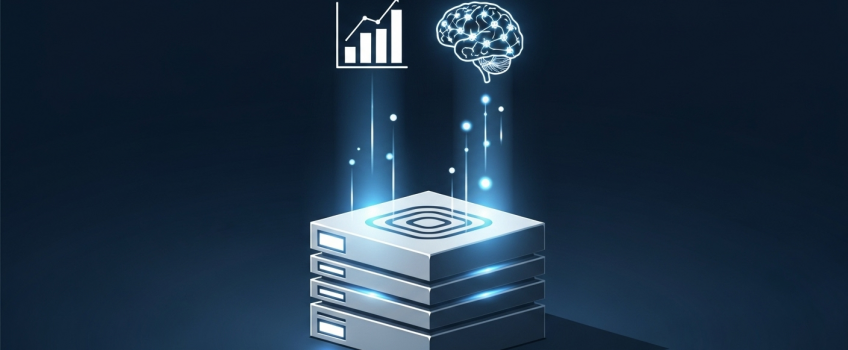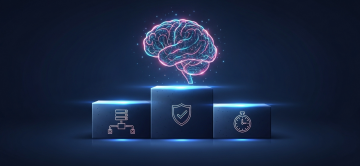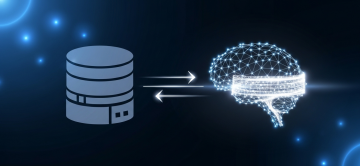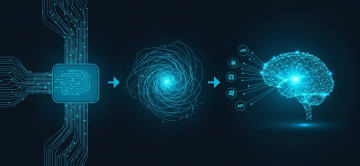RAG & The Modern Data Stack: A Unified Architecture

RAG vs. The Modern Data Stack: A Unified Architecture with LangChain, Pinecone, and dbt
A dangerous divide is emerging in the enterprise data landscape. On one side, you have the established **Modern Data Stack (MDS)**, centered around tools like Snowflake, dbt, and Fivetran, which has become the gold standard for business intelligence and analytics. On the other side, a new, parallel **"AI Stack"** is rapidly forming around Retrieval-Augmented Generation (RAG), powered by tools like LangChain, Pinecone, and various LLMs.
The critical "why": Many organizations are treating these as separate worlds, building two disconnected data ecosystems. This approach creates data silos, duplicates effort, and fundamentally limits the power of both stacks. An analytics team can't see what the AI is learning, and the AI can't access the clean, structured data governed by the MDS. This is not just inefficient; it's a strategic dead end. At ActiveWizards, we believe the only way forward is to merge these worlds. This article presents a unified architecture that treats the MDS as the foundational source of truth for the AI Stack.
The Great Divide: Two Stacks, One Goal
To understand the solution, we must first appreciate the problem. Let's look at the "standard" composition of these two stacks as they are often built today.
| Component | The Modern Data Stack (MDS) | The "AI Stack" (RAG) |
|---|---|---|
| Primary Goal | Answer known questions with historical, structured data (BI Dashboards). | Answer novel questions with unstructured, semantic data (Conversational AI). |
| Central Storage | Cloud Data Warehouse (Snowflake, BigQuery, Redshift). | Vector Database (Pinecone, Chroma, Weaviate). |
| Transformation | dbt (for SQL-based, version-controlled transformations). | Python scripts, LlamaIndex/LangChain document loaders. |
| Data "Shape" | Tables, rows, and columns. Highly structured. | Text chunks and high-dimensional vectors. Unstructured. |
| Primary User | Data Analyst, Business Stakeholder. | AI Agent, End User via chatbot. |
Viewing them this way, it's easy to see why teams build them separately. But the most powerful insights lie at their intersection.
The Bridge: A Unified Architecture for Data-Aware RAG
A truly intelligent RAG system needs more than just semantic similarity search. It needs to filter results by structured metadata ("find me documents related to 'Project X' created *last quarter* for *customer Y*"). This structured data already lives in your data warehouse. The logical conclusion is that the MDS should not be a competitor to the AI Stack; it should be its primary, trusted data source.
Diagram 1: A unified architecture where the MDS (dbt + Warehouse) is the source of truth for the AI Stack.
The Role of dbt: "T" in ELT for Your AI Stack
This is the most powerful and overlooked concept in the unified architecture. Data teams already use dbt to transform raw data into clean, reliable models for analytics. The exact same process and tooling should be used to prepare data for your RAG system.
Instead of one-off Python scripts, your data engineers can create dbt models that:
- Ingest data from sources like Salesforce, Zendesk, or internal databases.
- Join tables to create a rich, contextual document (e.g., combine a support ticket with the customer's subscription level and recent activity).
- Clean, format, and chunk the text, preparing it perfectly for embedding.
- Materialize these prepared documents as a clean table (e.g., `docs_to_embed`) in the data warehouse.
This approach means your AI's data source is now version-controlled, testable, and documented right alongside your core business analytics models.
-- Example dbt model: models/prep/docs_to_embed.sql
{{
config(
materialized='incremental',
unique_key='document_id'
)
}}
SELECT
s.ticket_id AS document_id,
'zendesk_ticket' AS source,
c.customer_name,
c.subscription_tier,
s.created_at,
-- Combine multiple fields into a single text block for embedding
'Ticket Subject: ' || s.subject || '\n\n' ||
'Ticket Description: ' || s.description AS text_content
FROM
{{ source('zendesk', 'support_tickets') }} s
JOIN
{{ ref('dim_customers') }} c ON s.customer_id = c.customer_id
{% if is_incremental() %}
-- this filter avoids re-embedding old documents
WHERE s.updated_at > (select max(updated_at) from {{ this }})
{% endif %}
The RAG Application: Leveraging the Unified Stack
With this foundation, the RAG application becomes much more powerful. When a user asks LangChain, "What were the main issues for our enterprise customers last month?", the process is:
- LangChain parses the query to identify the semantic part ("main issues") and the structured filters (`subscription_tier = 'enterprise'`, `created_at` within last month).
- It queries Pinecone with the embedding for "main issues" and passes the structured criteria to Pinecone's metadata filtering capability.
- Pinecone returns only the most relevant documents from the correct customer tier and time period.
- The retrieved documents are passed to the LLM for a high-quality, accurate summary.
The "Embedding Pipeline" in the diagram is a mission-critical component. It needs to be a robust, observable, and scalable system. In production, this is often an orchestrated workflow (e.g., using Airflow, Prefect, or Dagster) that triggers on a schedule or when the `dbt` models are updated. It reads the `docs_to_embed` table, calls an embedding model API (like OpenAI or a self-hosted model), and upserts the vectors and metadata to Pinecone. Treating this pipeline with the same engineering rigor as your core data pipelines is essential for keeping your AI's knowledge up-to-date.
The ActiveWizards Advantage: Engineering Your Unified Data & AI Strategy
The separation between the Modern Data Stack and the AI Stack is artificial and detrimental. The future of enterprise intelligence lies in their unification. Achieving this requires a deep, integrated understanding of both worlds: the discipline of data modeling, transformation, and governance from the MDS, and the complexities of vector databases, embedding models, and agentic workflows from the AI Stack.
At ActiveWizards, this is our native territory. We architect and build these unified platforms, ensuring your AI is not an isolated experiment but a fully integrated, data-aware component of your core business strategy.
Unify Your Data and AI Stacks
Stop building data silos. Let's design a unified architecture that leverages your investment in the Modern Data Stack to power a new generation of intelligent, data-aware RAG applications. Contact our experts to get started.



Comments (0)
Add a new comment: